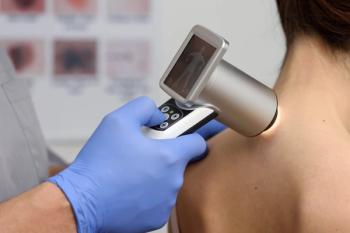
Three data-driven practices that boost adherence
Here’s a three-pronged approach to improve adherence program efficiency that leverages predictive data analytics, hospital on-site pharmacies and post discharge follow-up evaluation to achieve real, measurable results.
Medication adherence is a significant healthcare challenge for organizations across the country, and around the world. In 2003, the World Health Organization (WHO) pegged nonadherence as the leading cause of preventable mortality, morbidity and healthcare costs. In fact,
Not only is nonadherence a tremendous public health problem, it’s also a huge driver in the high cost of healthcare,
For managed care organizations, the financial risk could grow even larger as bundled payment programs begin to gain traction. In instances where reimbursements may be cut or penalties levied against organizations with high readmission rates and other negative performance factors, non-adherence could mean a significant blow to fiscal stability, not to mention the overarching concern of patient population health.
Adherence failure points
A number of causes play into nonadherence, whether it be failure to take the prescribed dosage, at the right time and frequency, or failure to fill the prescription at all. Of course, some medications are simply prohibitively expensive. If it comes down to choosing between food and medicine-a situation far too many find themselves in-most patients would obviously choose to eat. To aid in affordability, many providers have begun offering patient assistance programs and some manufacturers also now offer discount programs, which helps, but isn’t always the answer. Where transportation is an obstacle, connecting patients with pharmacies that deliver or mail-order services for long-term supplies is a solution.
Patient education is an issue in some cases. For those with chronic illnesses, it’s not unusual for patients to be taking five or more drugs, and they’re simply confused about what they should be taking, why it’s important, how often it must be refilled and what’s the proper frequency and dosage for all of their medications. Here’s where patient education programs can help. By working individually with patients to develop an adherence plan, organizations can dramatically improve compliance, but of course, this approach can also be costly and time-consuming, especially when resources are already limited.
Data-driven solutions boost adherence program efficiency
Of course, as much as we’d like to, it’s simply not possible for most organizations to address each individual patient’s needs efficiently. Instead, we need technological tools that enable us to serve more patients, better and faster, and ensure high-risk patients do not slip through the cracks. The solution lies in a three-pronged approach that leverages predictive data analytics, hospital on-site pharmacies and post discharge follow-up evaluation to achieve real, measurable results. Here’s how:
1. Invest in a good analytics solution. With so many potential adherence failure points, it’s nearly impossible to identify which patients fall into which bucket anecdotally based on reports from pharmacists, case managers and hospitals. And, for some patients, there could be multiple factors at play. A robust data analytics solution that integrates clinical data and outpatient medication history can help identify those failure points, provide visibility into root causes of non-compliance and even help predict which patients-either individually or by population cohorts based on demographic or disease characteristics-will likely face adherence challenges. By identifying key risk factors like prior gaps in fill, complex medication regimens and readmission risk, a predictive solution enables organizations to address those failure points to mitigate risk and deliver services proactively to encourage compliance.
2. Empower the health system ambulatory pharmacy. On-campus ambulatory pharmacies have the opportunity to become a hub of medication adherence for hospitals and health systems. Ensuring that high-risk patients get their prescriptions before leaving the hospital addresses a potential failure point and is convenient for the patient and their caregivers. Additionally, by integrating patient assistance programs, the pharmacy can help patients overcome economic barriers to patient care.
3. Implement post-discharge follow-up processes. While following up with every discharge patient may not be feasible, integrating a solution that analyzes discharge medications and clinical data to flag high-risk patients enables organizations to tailor follow-up to be condition-specific for a smaller patient population. Call centers can escalate instances where patients did not fill meds, don’t understand how to take meds or are experiencing symptoms that suggest an adverse reaction to the appropriate case managers, patient physician or pharmacists.
A prescription for success
Organizations that implement this type of adherence approach have seen a dramatic drop in re-admissions. In just one example, two Texas hospitals saw readmission rates drop by 51.1% for Medicare patients through a program that integrated their systems with a national retail drugstore chain through a medication adherence management platform. The program identified high-risk Medicare patients upon admission, offering them medication delivery at bedside and clinical follow-up calls from a pharmacist to assist, educate and answer questions regarding medication therapy for 30 days after discharge. As a result of the program, the hospitals reduced their relative readmission rates from 28% to 13.7% over the two-year period.
Many organizations use PDC scores-the proportion of days covered-to measure readmission risk related to medication noncompliance. And, it’s true that lower PDC scores directly correlate with higher 30-day readmission rates. However, just identifying the PDC score is only half the battle. Pinpointing the drivers behind any gaps-and predicting which patients are most at risk for those factors-is the first step toward taking preventative measures.
Improved medication adherence is an effective strategy for reducing readmissions. It’s good for patients, improving both clinical outcomes and satisfaction, and it’s good for pharmacy economics, increasing the volume of medications filled in the hospital. Finally, it’s also good for health systems and payers, improving population health and reducing the cost of care.
Fortunately, there are tools available on the market that can address all three of these must-have functions in one solution. For managed care organizations, choosing the right integrated partner can mean getting up to speed faster, ensuring seamless data sharing and interoperability between provider systems of record, and employing data-driven feedback and programmatic evaluation measures that can ensure continuous improvement.
Neil Smiley is CEO of
Newsletter
Get the latest industry news, event updates, and more from Managed healthcare Executive.






















































